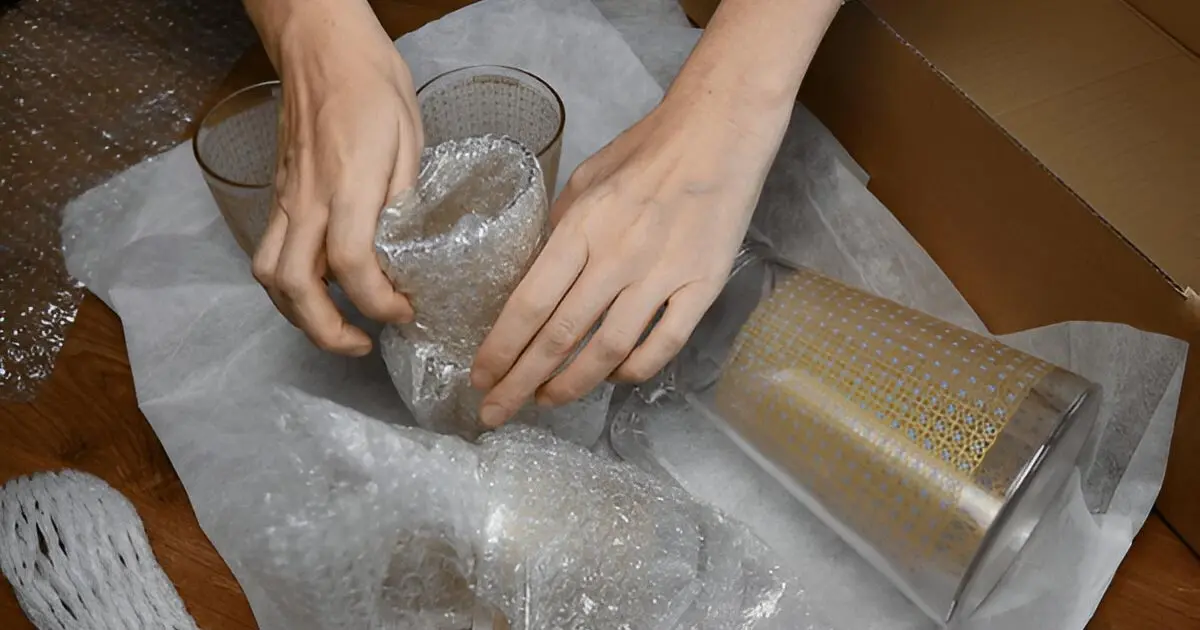Although moving can be exciting, it can also be challenging and stressful, especially when it comes to packing your clothes. With the right preparation, getting your clothes ready for a move won’t cause any issues. Follow these comprehensive guidelines to pack efficiently.
Start by making a list
Before you pack, it’s important to know what clothing you have, what needs to be thrown out, and what needs to stay. Take inventory after classifying your clothing into piles for keeping, donating, and selling. This can help you organize your wardrobe and determine how many resources you’ll need for packing.
Group apparel based on category
Next, group your clothing according to type, size, and material. Sort them into categories like dresses, shirts, trousers, and so forth. This will make packing, finding, and unpacking items in your new home simpler.
Organize Your Packing Materials
Organize your packing materials, including boxes, packing tape, bubble wrap, and wardrobe boxes. Label each box clearly with the content and keep an inventory of all boxes to ensure that none gets lost.
Fold And Pack Your Clothes
For folded clothes, fold them neatly and put them in a box. Try to stack them tightly to avoid creases or wrinkles. Use bubble wrap for fragile items like accessories or shoes. Hang your clothes on the provided rods, leaving a little space between them to prevent wrinkles. Be sure to wrap any delicate items such as hats or scarves and pack them inside the box.
Protect Delicate Fabrics
If you have delicate or expensive fabrics like silk or lace, place them inside garment bags to protect them from getting damaged during transit. You can also use tissue paper between each layer of clothing to prevent scratches or any discoloration.
Seal And Label The Boxes
Once you’ve packed your clothes, seal the boxes with packing tape, making sure all edges are securely covered. Finally, label each box with a clear and descriptive label of its contents and the room it’s going to.
Tips for Preventing Common Errors When Packing Clothes for a Move
We’ve listed several typical blunders to steer clear of while packing your clothes for a move to guarantee that they arrive in perfect shape.
Not organizing your clothing
Not arranging your clothes is one of the worst blunders you can make when packing for a move. Spend some time going through all of your clothing and getting rid of anything that doesn’t fit, is out-of-date, or that you don’t wear. You won’t just need to carry fewer clothes because of this; you’ll also find it simpler to sort and arrange them when you’re packing.
Excessive box packing
Another typical error when storing clothes is overpacking the boxes. You shouldn’t over-pack your boxes because it can harm your clothes. The garments may be damaged or destroyed if the box bursts because of the weight of the contents. Use the right-sized box, and distribute the weight of your clothing equally.
Using ineffective packaging methods
Using the wrong packing materials is another error individuals make while putting away their garments. Use fewer garbage bags because they are more likely to rip and expose your clothing to moisture, dirt, and other contaminants. Instead, use sturdy boxes, wardrobe boxes, or vacuum-sealed bags to pack your clothes.
Leaving your boxes without labels
When packing your clothes for a move, labeling your boxes is crucial. If you don’t identify your boxes, unpacking could get chaotic and confusing. Make sure to mark each box with its contents and the location in the room. When you get to your new house, this will make it simpler for you to locate your clothing.
Including delicate clothing in your bag along with other stuff
Packing specific clothing items, such as delicate textiles, suits, and gowns, calls for extra caution. Do not stow these goods with clothing or other materials that can harm them. Instead, package them individually and mark the boxes as “fragile.”
Your garments will arrive in good condition if you avoid these typical blunders.
Clever Hacks for Moving Clothes Packing
- Start By Developing A Strategy – Make sure you have a strategy in place before you begin packing. Decide on the goods you will be keeping, donating, or discarding. Next, classify the rest of your clothing by type and season to make packing and unpacking simpler.
- Invest In Space-Saving Bags – To make the most of your travel space, consider purchasing space-saving bags. Your garments can be compressed using these bags, giving your baggage additional room. When bringing along large items like coats and sweaters for the winter, this is extremely useful.
- Maximize Your Carry-On – If you’re flying, maximize your carry-on luggage. Pack a change of clothes, important documents, and any fragile items in your carry-on. This will ensure that you have these items with you at all times and they won’t get lost or damaged in transit.
- Use Suitcases As Drawers – If you’re staying in a hotel or temporary housing, consider using your suitcases as drawers. Unpack your clothes into the drawers of the suitcase and leave them there for easy access.
What is the Right Packing Method for Clothes?
Choosing the right packing method for your clothes can make a vast difference.
- Rolling: – Rolling is one of the most popular packing methods and for good reason. It maximizes space, prevents wrinkles, and allows you to pack more items. T-shirts, jeans, and fitness attire are excellent candidates for this technique. Lay your clothing flat on a surface, fold it in half, and then roll it securely from bottom to top. Use a knot or rubber band to keep secure.
- Folding: – To fold your clothes, spread them out flat on a surface and iron out any creases. Then, neatly fold the papers into a rectangle shape, ensuring that it tucked all loose ends in. Place the heaviest stuff at the bottom of the bag as you stack your folded belongings inside.
- Bundle: – Start with your largest piece, like a jacket or jumper, and arrange your clothing in a bundle on a flat area. Wrap smaller items, such as t-shirts and trousers, around the large item before placing it on top of them. The result is a package that doesn’t take up a lot of room in your suitcase and is simple to pack.
- Hanging: – Hanging clothes in your suitcase is a brilliant method for items that wrinkle easily or delicate pieces like suits, dresses, and blazers. However, this method takes up more space and requires a suitcase with a hanger compartment.
Expert Tips for Packing Shoes Like a Pro
Here are some expert tips for packing your shoes:
- Choose the Right Packing Materials – Before you pack, it’s important to have the right materials on hand. Choose a lightweight and durable suitcase or backpack with compartments to separate your shoes from the rest of your belongings. You can also invest in shoe bags or packing cubes to keep your shoes clean and protected during transport.
- Clean and Prepare Your Shoes – Before you pack your shoes, it’s important to clean them thoroughly to remove any dirt or debris. This will help prevent staining and keep your shoes looking their best. If you’re packing leather shoes, apply a conditioning balm to keep the leather supple and moisturized.
- Stuff Your Shoes – To help maintain the shape of your shoes during transport, stuff them with soft items such as socks or tissue paper. This will also help prevent your shoes from getting crushed or flattened in your luggage. For delicate or embellished shoes, wrap them in tissue paper or bubble wrap for added protection.
- Pack Shoes Strategically – When packing your shoes, be strategic in how you arrange them in your suitcase or backpack. Start by placing heavier shoes on the bottom and lighter shoes on top to prevent crushing. If you have multiple pairs of shoes, try alternating the direction in which they are placed to save space. You can also tuck smaller items, such as socks or accessories, inside your shoes to maximize space.
While packing clothes might not be the most exciting part of moving, it’s an important task that can make a big difference in how smoothly your move goes. By planning, taking care of how you pack your clothes, and labeling your boxes, you’ll be able to enjoy your new home with all of your wardrobe intact.
FAQs About Packing Clothes for Moving
How Many Clothes Should I Pack For A Move?
This depends on the length of your move and the amount of storage space you have available. If you are moving a long distance or have limited storage space, consider packing only what you need and donating or selling any excess clothes.
Should I Pack Clothes In Vacuum-Sealed Bags?
Vacuum-sealed bags can be useful for saving space, but they may also compress your clothes and cause wrinkles. If you use vacuum-sealed bags, make sure to remove them from the bags as soon as you reach your destination to allow your clothes to fluff back up.
How Can I Protect My Clothes During The Move?
To protect your clothes during the move, use acid-free tissue paper or plastic garment bags to keep them clean and dry. You can also use bubble wrap or packing peanuts to cushion the box or suitcase containing your clothes.



